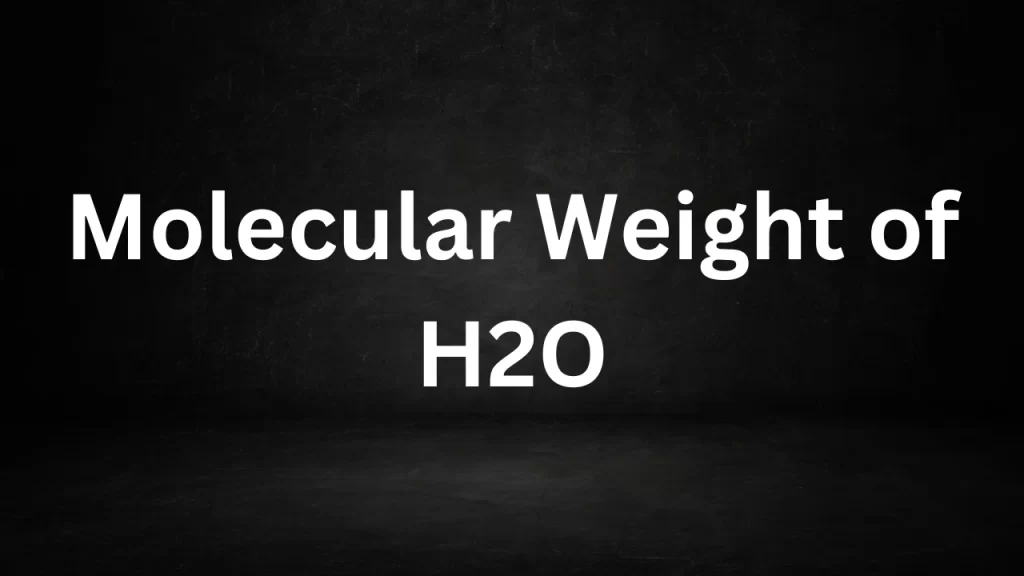Tag: zn no3 2.6 h2o molecular weight
Molar Mass Of Zinc
Molar Mass Of Zinc: In the world of chemistry, understanding the molar mass of elements is fundamental. It’s a concept that plays a crucial role in various chemical calculations, from determining the amount of a substance in a reaction to understanding its physical properties. In this article, we explore the molar mass of zinc (Zn), a vital element with a wide range of applications.

Molar Mass Of Zinc
What is Molar Mass?
Molar mass, also known as molecular weight, is the mass of one mole of a substance, typically expressed in grams per mole (g/mol). In the realm of chemistry, a mole serves as a foundational unit for quantifying entities like atoms, molecules, or ions. This number is approximately 6.022 x 10^23, known as Avogadro’s number.
Molar mass is significant because it allows chemists to relate the weight of a substance to the number of moles present, which is essential for performing stoichiometric calculations and understanding the behavior of substances in chemical reactions.
Calculating the Molar Mass of Zinc (Zn)
To determine the molar mass of zinc (Zn), we follow these steps:
- Find the atomic mass: The atomic mass of an element is the average mass of its atoms, taking into account the relative abundance of its isotopes. For zinc, the atomic mass is approximately 65.38 atomic mass units (amu).
- Multiply by the molar mass constant: The molar mass constant, which relates atomic mass units to grams per mole, is 1 g/mol. So, to find the molar mass of zinc, we multiply the atomic mass by this constant.
Mol Mass of Zn = Atomic Mass of Zn x Molar Mass Constant Molar Mass of Zn ≈ 65.38 g/mol
Hence, the mol mass of zinc (Zn) is approximately 65.38 g/mol.
Significance of Zinc’s Molar Mass
Understanding the mol mass of zinc holds significant importance across various applications:
- Chemical Reactions: In chemical reactions involving zinc, its molar mass is vital for accurately calculating the amount of zinc needed or produced, ensuring the reaction’s efficiency.
- Galvanization: In industry, zinc is commonly used to coat steel in a process known as galvanization. Knowledge of its molar mass is essential for quality control and determining the appropriate amount of zinc coating.
- Pharmaceuticals: Zinc is an essential mineral for human health and is used in various pharmaceutical formulations. Understanding its molar mass aids in dosage calculations.
- Alloys: Zinc alloys, such as brass and bronze, have numerous engineering applications. Molar mass information is crucial for alloy composition and properties.
- Corrosion Protection: Zinc is employed in sacrificial anodes to protect metal structures from corrosion in marine and industrial environments. Its molar mass is vital for designing effective corrosion protection systems.
In conclusion, the mol mass of zinc (Zn) is a fundamental concept in chemistry that has wide-ranging implications in various fields, including industry, medicine, and materials science. It enables precise measurements and calculations, making it an indispensable tool for understanding and utilizing this essential element in our daily lives.
Read More
- Differences Between Enthalpy And Entropy
- Periodic Table Class 11
- Molecular Weight Of Sodium Carbonate
- Difference Between Isothermal And Adiabatic Process
- Simple Harmonic Motion Examples
Frequently Asked Questions (FAQs) On Molar Mass Of Zinc
1. What is the molar mass of zinc, and why is it important?
The mol mass of zinc (Zn) is approximately 65.38 grams per mole (g/mol). It’s crucial because it allows chemists to relate the weight of zinc to the number of moles, aiding in various chemical calculations.
2. How is the molar mass of zinc calculated?
The mol mass of zinc is calculated by multiplying its atomic mass by the mol mass constant, which is approximately 1 g/mol.
- Mol Mass of Zn = Atomic Mass of Zn x Molar Mass Constant
3. What is the atomic mass of zinc, and how is it determined?
The atomic mass of zinc is approximately 65.38 atomic mass units (amu). The determination of zinc’s atomic mass involves considering the isotopes’ relative abundances and their corresponding atomic masses.
4. Why is the molar mass of zinc important in chemical reactions?
In chemical reactions involving zinc, its mol mass is crucial for calculating the precise amount of zinc needed or produced. This accuracy is essential for reaction efficiency.
5. What are some common applications of zinc that rely on its molar mass?
Zinc finds application in diverse fields, including galvanization for steel corrosion protection, pharmaceuticals for health benefits, and various alloy formulations. Its molar mass is essential for quality control, dosage calculations, and alloy composition.
Molecular Weight of H2O
Molecular Weight of H2O: Water, Earth’s most abundant and vital substance, consists of molecules possessing a distinct molecular weight critical for all life forms.
Understanding the molecular weight of water, represented as H2O, is fundamental not only in chemistry but also in various scientific and practical applications.
This article delves into the concept of H2O’s molecular weight, its calculation, and its importance across various fields of science and industry.

Molecular Weight of H2O
The Composition of Water:
Water, with the chemical formula H2O, consists of two hydrogen atoms (H) covalently bonded to a single oxygen atom (O). These atoms come together to form a water molecule. This molecular arrangement gives water its unique properties, such as its ability to dissolve a wide range of substances and its high heat capacity.
Calculating the Molecular Weight of H2O:
The molecular weight of a substance is defined as the mass of one mole of that substance, expressed in grams per mole (g/mol). To calculate the molecular weight of H2O, we consider the atomic masses of its constituent elements, hydrogen (H) and oxygen (O).
- The atomic mass of hydrogen (H) is approximately 1.01 g/mol.
- The atomic mass of oxygen (O) is approximately 16.00 g/mol.
To find the mole weight of H2O, we add the atomic masses of two hydrogen atoms and one oxygen atom:
Mole Weight of H2O (g/mol) = (2 × Atomic Mass of Hydrogen) + (1 × Atomic Mass of Oxygen)
Mole Weight of H2O ≈ (2 × 1.01 g/mol) + (1 × 16.00 g/mol) ≈ 18.02 g/mol
So, the mole weight of H2O (water) is approximately 18.02 g/mol.
Significance of Molecular Weight in Chemistry:
- Stoichiometry: Mole weight is crucial in stoichiometry, which involves determining the quantities of reactants and products in chemical reactions.
- Molarity: In chemistry, molarity (M) is a measure of the concentration of a substance in a solution. Molecular weight serves as a key factor in calculating molarity, a measure expressed as moles per liter (mol/L).
- Chemical Equations: Mole weight plays a vital role in balancing chemical equations to ensure the conservation of mass.
Real-World Applications:
- Laboratory Work: Chemists and researchers use the molecular weight of substances like water in laboratory experiments and analyses.
- Pharmaceuticals: Molecular weight is critical in pharmaceuticals for dosage calculations and drug formulation.
- Environmental Science: Understanding the molecular weight of water is essential in environmental science for assessing water quality and pollutant concentrations.
Conclusion:
The mole weight of H2O, approximately 18.02 g/mol, is a fundamental concept in chemistry and has broad applications in various scientific and practical fields. Whether in the laboratory, pharmaceutical industry, or environmental science, knowing the molecular weight of water is essential for precise measurements and calculations. It is a reminder of the simple yet profound principles that govern the behavior of substances at the molecular level, shaping our understanding of the world around us.
Read More
- Molecular Weight Of K2Cr2O7
- Molecular Weight Of Phosphorus
- Molecular Weight Of SO2
- Molecular Weight of Na2CO3
- Molecular Mass Of Sodium
Frequently Asked Questions (FAQs) on Molecular Weight of H2O
Q1: What is the molecular weight of H2O (water)?
A1: The mole weight of H2O, which is water, is approximately 18.02 grams per mole (g/mol). This value is calculated by summing the atomic masses of two hydrogen atoms (H) and one oxygen atom (O) in a water molecule.
Q2: Why is knowing the molecular weight of H2O important?
A2: Understanding the mole weight of H2O is crucial in various scientific and practical applications. It is used in chemistry for stoichiometry, molarity calculations, and balancing chemical equations. In fields like environmental science and pharmaceuticals, it helps in precise measurements and dosage calculations.
Q3: Does the molecular weight of H2O change with temperature or pressure?
A3: The molecular weight of H2O remains constant regardless of temperature or pressure. It is a fixed value based on the atomic masses of hydrogen and oxygen.
Q4: How is the molecular weight of H2O calculated?
A4: The mole weight of H2O is calculated by adding the atomic masses of its constituent elements. The atomic mass of hydrogen (H) is approximately 1.01 g/mol, and the atomic mass of oxygen (O) is approximately 16.00 g/mol. Therefore, for water (H2O), it is approximately 18.02 g/mol.
Q5: Can the molecular weight of H2O vary in different types of water?
A5: The mole weight of H2O is the same for all types of water, including distilled water, tap water, and seawater. It is a constant value based on the chemical composition of water, which consists of two hydrogen atoms and one oxygen atom per molecule.